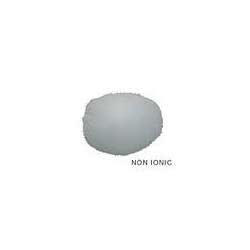Non Ionic Polyelectrolytes
In Dubai

We offering you a complete choice of products which include Polyelectrolytes Chemicals such as Non Ionic Polyelectrolytes, Polyelectrolyte Flocculating Agent, Polyamine Chemical, Anionic Polyelectrolytes, Cationic Polyelectrolyte and Poly-DADMAC, Polyelectrolytes Polymer are water soluble polymers carrying ionic charge along the polymer chain. Depending upon the charge, these polymers are anionic or cationic. Polyelectrolytes are available in a wide range of molecular weights and charge densities. Homo polymers of acrylamide are also included in the family of polyelectrolytes though they do not carry any charge.
Non ionic Poly-electrolytes are organic high molecular weight products with a polyacrylamide base, which are completely soluble in water. They are used as aids flocculants in processes, flocculation of colloidal suspensions, grey water and waste-water clarification, sludge dewatering, Flocculant for sludge floatation, discoloration of grey water etc. The polyelectrolytes act as the flocculants which eliminate and reduces the load of particles of liquid waste. We manufacture and supply range of non ionic Polyelectrolyte for treatment of water from various processes.
They are used for the same purpose with anionic polyelectrolytes, however , nonionic polyelectrolytes do not consist of charged polymer structures whereas anionic and cationic polyelectrolytes do. They are chargeless polyelectrolytes and able to perform better than the other type of polyelectrolytes when water composition is compatible with them.
Chemical Composition :Polyacrylamide
Appearance : White Granule
Ionicity : Nonionic
Bulk Density ( gr / ml ) :0.55 ~ 0.65
pH of solution ( 250C ) :0.1%5.5 ~ 6.5
Advantages:
Economical to use- Effective at very low dosage levels, resulting in reduced handling and storage cost.
Works over a wide pH range and does not alter pH in the system.
Larger, faster-settling flocs are formed in gravity settling operations.
Increased filtration rates and drier cakes are produced in filtration processes. Sludges contain less ash when incinerated.
Higher solids capture, increased clarity, and greater throughput are attained in centrifugation.
Air flotation operations produce clearer underflows and grater throughput.
Categories
- Water Treatment Plants (WTP) Chemicals
- Effluent Treatment Plants Chemicals (ETP)
- Reverse Osmosis Plant Chemicals (RO)
- Swimming Pool Chemicals
- DM Plant Chemicals
- Industrial Chemicals
- Sewage Treatment Plant Chemicals (STP)
- Polyelectrolyte
- Activated Carbon Granular | Powder
- Alum (Ferric | Non Ferric | Powder | Slabs | Lumps)
- Filtration Media
- Hydrated Lime
- Silica Gel Pouches
- Biocides
- Super Absorbent Polymer (SAP)
- Sodium Hypo Chlorite | Liquid Bleach | Chlorine | Hypo
- Iron Removal Media
- TMT-15%
- Water De Coloring Agent | Color Removal Agent
- Cooling Tower Chemicals
- Boiler Chemicals
- Cosmetics Chemicals
